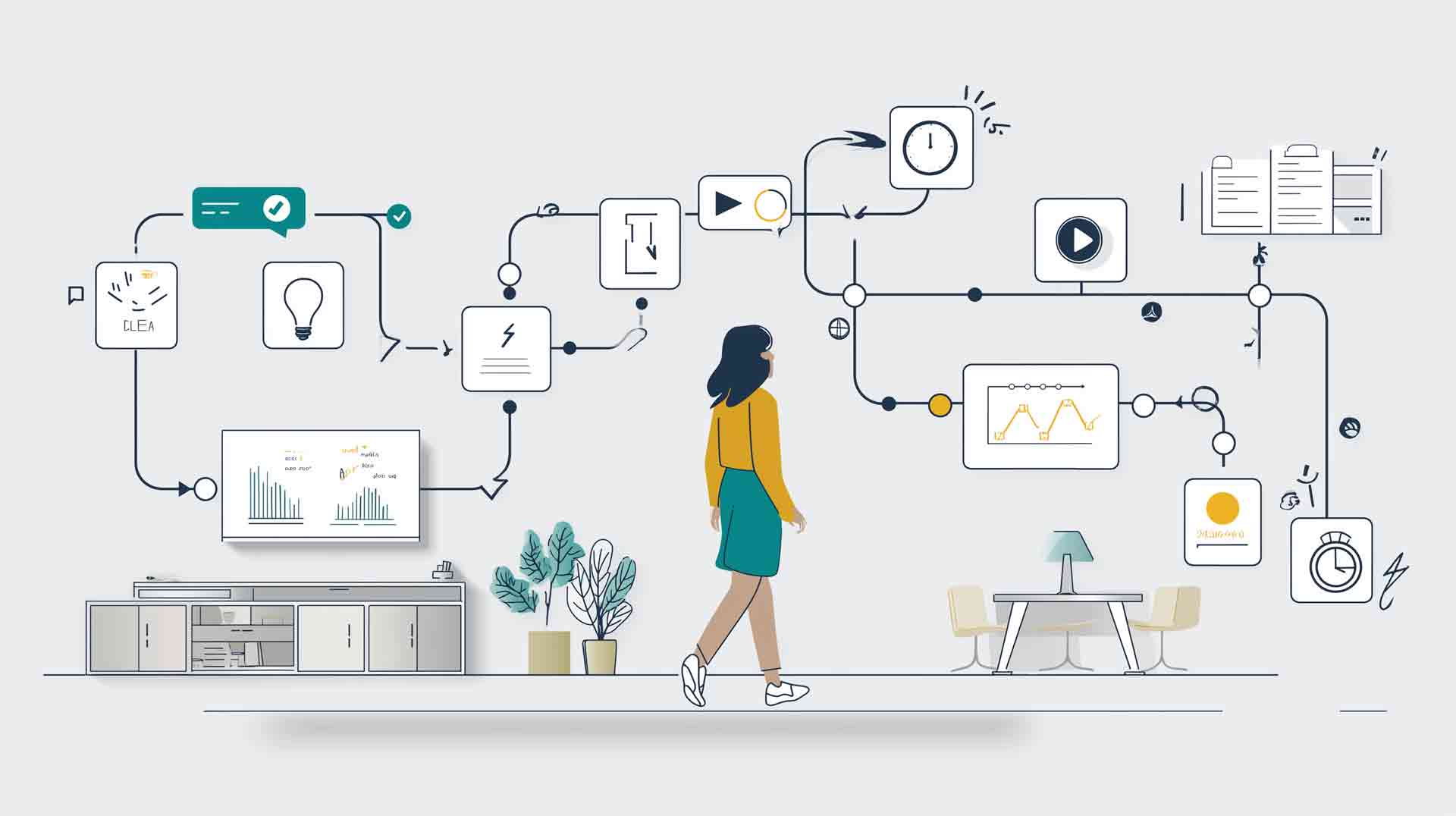5 min read
Microlearning for Engagement: Small Wins That Stick
 Jennifer Lindsay-Finan
:
Oct 13, 2025 7:59:59 AM
Jennifer Lindsay-Finan
:
Oct 13, 2025 7:59:59 AM

They’re doing the activities. They’re nodding along. But are they using what they learned the next day—when it actually matters?
When the Lesson Ends, Does the Learning?
You just wrapped up a virtual session. The engagement was decent: cameras on, polls answered, and the chat was lit up during the debrief.
But a week later, your inbox fills with questions that were already covered. Or worse—silence.
Learners forget because we stop teaching once the session ends. That’s not a flaw in their motivation. It’s a gap in our design.
To fix it, we need to go beyond interactivity and toward utility. We need microlearning for engagement—small, targeted assets that make learning stick and stay useful in the flow of work.
When it’s done right, it’s a reminder that virtual learning is real learning: powerful, practical, and worthy of long-term investment.
Key Takeaways
- Shorter content boosts learner engagement—especially in virtual and hybrid programs with time and attention constraints.
- Microlearning must live beyond the session—design reusable tools that support application after class.
- Embed microlearning throughout your strategy—before, during, and after the virtual training session.
- Swap passive slides for tools learners will use—like checklists, worksheets, and infographics that support real work.
- Track engagement where it matters—job aid downloads, tool reuse, and learner behavior reveal true impact.
What Is Microlearning—and Why Does It Work?
Microlearning delivers focused, digestible content tied to a single objective. It's not just “short,” it’s strategic. Each asset solves one problem, teaches one concept, or supports one decision.
And it works because:
- It reduces cognitive load
- It meets learners in the moment of need
- It’s easy to reuse, revisit, and repurpose
- It supports real-world behavior change, not just knowledge gain
But microlearning isn’t just a delivery format, it’s a tool strategy. And the best microlearning is used long after a class.
How Microlearning Supports Hybrid Learning Engagement
Hybrid learners have less time, more distractions, and fewer shared environments. They need support that’s flexible, accessible, and practical.
Microlearning works because it’s:
- Modular: easily slotted into live sessions, between modules, or as follow-ups
- Reusable: can be shared again in coaching, huddles, or refresher sessions
- Measurable: usage rates, download stats, and access frequency tell you what’s working
Most importantly—it gives learners something they’ll actually use on the job.
Example: In a hybrid sales onboarding program, one organization replaced a 15-slide product deck with a 1-page decision map. The facilitator used it live, sales reps saved it as a PDF on their phones, and two months later it was still being referenced in team huddles.
That’s not just engagement during class. That’s engagement that lasts.
Teach with the Tools They’ll Use Tomorrow
Too often, we teach about tools. But what if we taught with the tools we want people to use on the job?
That’s the shift microlearning makes possible.
Here are six ways to make your virtual classroom a space for practice—and performance support.
1. Start with a Job Aid—Not a Slide
Why it works: A job aid is more than a resource—it’s a reusable guide. Use it during the session, then hand it off for ongoing use.
Try this:
- Share a checklist or flowchart in the chat
- Use App Share to walk through it with live annotations
- Center an activity around applying the aid to a real scenario
We’re not just telling learners what to do. We’re letting them practice how to do it—with the same tools they’ll rely on later. "Virtual Training Strategies: Embracing Microlearning" highlights how microlearning job aids—like concise checklists or infographics—aren’t just supplemental materials; they become essential tools learners return to when back on the job.
2. Turn Whiteboards Into Microlearning Assets
Why it works: When learners generate content, it sticks. When that content becomes a reusable visual, it supports performance.
Try this:
- Facilitate a whiteboard brainstorming session
- Take a screenshot of key takeaways
- Share it post-session as a recap or starter guide
3. Make Worksheets Worth Keeping
Why it works: Worksheets aren’t just in-session exercises—they can become templates learners reuse for real work tasks.
Try this:
- Provide a decision-making or planning worksheet
- Use breakout rooms to apply it in practice
- Encourage learners to save a copy and revisit it during real-world challenges
4. Replace Passive Recaps with Infographics
Why it works: PowerPoint decks gather dust. Infographics get pinned to cubicle walls, shared in Slack, and bookmarked.
Try this:
- Use an infographic to summarize a complex model or framework
- Make it mobile-friendly and visually clean
- Embed it in your LMS or learning hub as a post-session resource
- Remember to optimize infographics for mobile learners, especially in hybrid settings
5. Model, Don’t Just Mention Key Tools
Why it works: Learners are more likely to use tools they’ve already interacted with in training.
Try this:
- If you expect them to use a tool (e.g., a reflection card, a feedback framework), bring it into the session
- Practice using it live
- Reinforce by sending it out the results of their practice afterward, with a debrief of the results
6. Curate with Context
Why it works: You don’t have to create everything. Strategic curation saves time and adds credibility—if you make it relevant.
Try this:
- Link to a podcast or blog aligned with your topic
- Frame it with “why this matters” during the session
- Add it to a resource list organized by moment of need (e.g., “Use this before a coaching conversation”)

"11 Ways To Increase Virtual Learner Engagement" emphasizes that high-impact curation comes from carefully selecting only the most essential and relevant content—resources that directly support the learning objective—so learners aren’t overwhelmed by fluff.
6 Steps to Maximize Microlearning in Virtual and Hybrid Learning
Microlearning only works when it’s intentional. Use this quick framework to create assets learners will use—during and after the session.
- Clarify the objective.
What performance behavior are you trying to support? - Choose the right asset.
Is this best solved with a job aid? A video? A podcast snippet? - Integrate it into the session.
Learners should use the asset—not just receive it. - Debrief with intent.
Ask: "How will this help you next time you do X?" - Embed in the workflow.
Share tools in systems learners already use—email, Teams, LMS, Slack. - Iterate through collaboration.
Ask for feedback. Share improved versions. Let the tool evolve with the work.
Want help applying these strategies in your own sessions?

Join our Virtual Classroom Microlearning Approach Workshop to design practical, performance-based microlearning for real learner impact.
Microlearning Makes Engagement Measurable
The beauty of microlearning is that learners vote with their behavior.
You can track:
- Job aid downloads and reuse
- Copy-paste of chat takeaways
- Replays of short videos or podcast clips
- Access logs on post-session content
These are signals of real engagement in the wild—not just during class. And they’re easier to track when you evaluate beyond attendance.
Final Thought: Don’t Just Teach. Equip.
Slides don’t lead to behavior change. Tools do.
Microlearning works because it respects time, attention, and context. It helps you teach in a way that’s usable during the session and in the real world.
For hybrid teams and global learners, microlearning bridges time zones, tools, and attention spans, making engagement practical and scalable.
Design with utility in mind. Teach with the tools you expect learners to use. That way, engagement won’t end when the session does.
Is Your Virtual Program Engaging—or Just Active?
Download the Virtual Engagement Scorecard to find out.
This diagnostic tool helps you assess your learning program across the three dimensions of real engagement—emotional, intellectual, and environmental—using the InQuire Engagement Framework™.
You’ll get:
- A quick scoring model to identify strengths and gaps
- Custom action planning prompts
- Next steps aligned to InSync’s virtual and hybrid learning solutions
Ready to turn passive attendance into real engagement? Schedule a Strategy Call
Want to go deeper? Learn how to create microlearning that drives performance—before, during, and after your sessions—in our Virtual Classroom Microlearning Approach Workshop!

Top 5 Tools to Create Accessible and Inclusive Virtual Classrooms
As virtual and hybrid learning environments continue to evolve, meeting the diverse needs of learners has become a critical priority. Accessibility...

Don’t Turn Your Virtual Learners into Zombies
How to tell when learners become zombies and what to do to prevent it We’ve all been in long, dull video calls where we just stare at the camera,...
